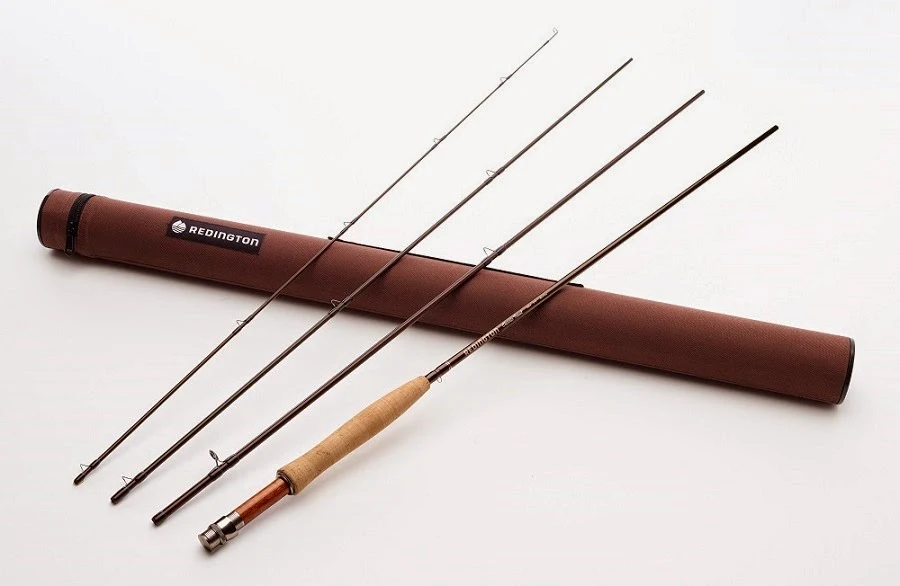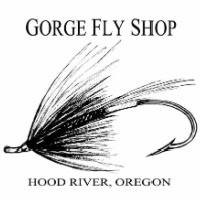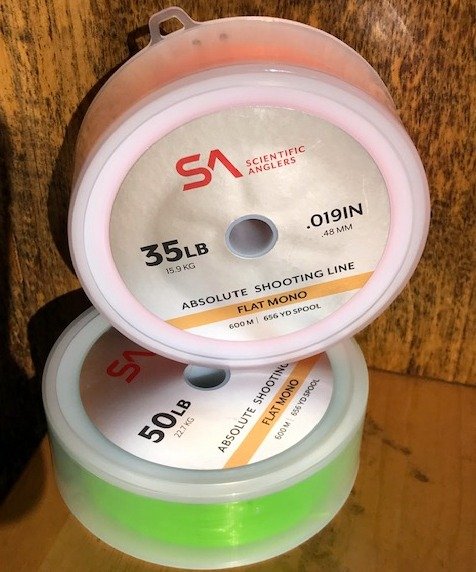“The Trilogy Comes to Light”
John Garrett
Every once in a while in the course of fly fishing evolution, something happens or is created, that changes the game. Techniques are tweaked and fine-tuned, rod technology introduces lighter and stronger materials which in turn make it possible to cast, especially with a two handed rod, all day long with little or no fatigue, reel materials and drag systems just keep getting better and better as well. In this post I want to focus on the Skagit style spey lines. This “Skagit” style of spey casting has opened up a whole new world for many fly anglers and generated what I would call a revolution.
I can remember some years ago when I first started seeing two handed spey rods on the rivers I was guiding. Curious, I asked the first fellow I saw with one…”what kind of rod are you fishing with?” and he quickly replied…”Spey rod”. This thing was huge, I mean (I’m not certain but vaguely remember) it had to have been fifteen feet and he said it was a 9/10wt. I asked him if I could hold it and check it out and he was gracious enough and let me interrupt his routine. When he put that rod in my hand, I kid you negative, it seriously felt like I was holding on to a telephone pole. At that moment, right then and there, I convinced myself that I would NEVER be a spey fisherman. I refused to fish with a telephone pole and such heavy equipment for the six to fifteen pound steelhead that I would typically catch. It seemed like a lot of work and major overkill to me.
So, I put that technique in the back of my mind and filed it under: “I’ll never do that again” and I moved on. Years past by and right under my nose the spey industry was evolving and I was missing out on it. Next thing I see…another guy with a smaller, lighter rod…so on and so on…to the point now that I am becoming very interested in this spey thing. This was before the spey explosion, we are experiencing today. Now, I know that Skagit style casting has been around for a while now, but even in the realm of just Skagit style casting, there has been considerable changes since it first came about. The beautiful thing about Skagit style casting is its versatility but with that versatility comes what some would consider mass confusion.
Here in a reprinted copy of George Cook and Erik Johnson’s Skagit/ology 3.0, George and Erik help simplify and bring to light the very Heads (lines) that are part of the confusion. Let me say that in giving credit where credit is due, I would personally like to state that George “Georgie” Cook deserves to be on the name dropping list that he himself includes in this piece. A master caster/angler, and a rep worth his weight in gold, who’s been in the game for a long time, he knows his stuff and is passionate about it. Thank you Georgie and Erik for sharing these golden nuggets…
Skagit/ology 3.0 (2014 | 2015)
By George Cook | Erik Johnson
Over a decade has passed since the introduction of the vaunted, original Yellow Skagit Line. However, despite its effectiveness and popularity, misconception, confusion, and lack of overall clarity of the use of Skagit Lines remains. The following is a short but specific conversation regarding the history and usage of the various Skagit lines in the worldwide spey fishing theater.
History – Beginning in the 1990’s many of today’s most recognizable spey authorities independently where developing Skagit type lines. Noted casters and anglers such as Ed Ward, Mike Kinney, Scott O’Donnell, Scott Howell, Mike McCune, Jerry French and the legendary Harry Lemire among others were at the forefront of the Skagit revolution. Along the banks of Northwest rivers coupled with late nights in the depths of fly tying rooms of the Pacific Northwest the chop-shop artist and line theologists were hard at work developing what would become today’s Skagit Lines. Some would cut and splice their way, others would utilize bumped up WindCutter bodies to perfect the craft. The shorter belly approach was underway. The day had come to maximize the spey rod for winter Steelhead conditions as well as Alaskan and B.C. Kings with large outsized flies. The use of Northwest hybrid and Skagit Casts such as the Snap Tee, Perry Poke, Snap Z and Wombat lent themselves to a shorter more powerful approach. Today the Skagit line is THE approach to sinking line endeavors worldwide. Be it Kings in Alaska to Sea Run Browns of the Rio Grande from the Umpqua to the Babine and all points in between. The Skagit Line has become the omnipresent tool. Originally developed purely as a sink tip asset, the Skagit line also can be an effective full floating line particularly on 12’ to 13’9” rods. To be sure, the spey caster will endure a greater level of stripping of line to recast (applies to all Skagit lines versus mid to long belly lines) but the reward is a undeniable highly energized, long and straight cast.
Types – The original
RIO Skagit Line worked from a 27’ body that today in the era of the new
Skagit Max is found in a 23’ to 25’ length. In 2009, the
Skagit Short came onboard providing and ideal line for switch rods as well as shorter spey rods in the 12-12’9” range. These lines are specialized shorter 17’ to 20’ Skagit lines now know today as the
Skagit Max Short. Often times the Max Short serves the ardent spey caster well in strategic tight corridor situations often found in such Steelhead haunts as the
Oregon Coast,
Olympic Peninsula and
Vancouver Island.
Usage – Specific Skagit Line size (
grain weight) math-ups come with a degree of variability coupled with angler opinion. Line speed versus load, moderate versus fast action all add up to a witch’s brew of variables that must be fleshed out on any given rod regardless of manufacturer. The great casters often find themselves 25 to 100 grains apart on any given rod. In the end the angler must boil it down and get the details. All in all, most spey rods 12’ to 15’ in length will have as many as three different Skagit Lines that will work. For example, the TCX 7126-4 aka
“The Deathstar” can work with a Skagit Max Long in 525, Skagit Max 550 and even 575. The 525 offers the line speed choice while the 575 offers the mas load choice. Generally, one will be ideal. To discover this, the angler must seek out opinion within the spey community, be it a guide, angling buddies, factory rep or retail representative, as we as
GET OUT AND CAST!
Skagit Max Short – Ideal for switch rods in the 10’6” to 11’9” range along with application for shorter spey rods in the 12’ to 12’9” range, 8 weight and under. These are specialized shorter 17’ to 20’ Skagit lines. These lines are also perfectly at home on 9 to 10 foot single handed rods in a single hand spey approach. The new Max Short is available in 25 grain increments from 200 grains to 650 grains.
Skagit Max – The Max is a true game changer featuring RIO’s exclusive
connect-core technology, along with a new taper that produces outrageous line speed with wind slicing tight loops. Available from 425 grains up to 750 grains, these revolutionary 23’ to 25’ heads are destined to become a Northwest favorite.
New Skagit Max LONG – While the last decade has witnessed an ever increasing angler preference for shorter spey rods with 12’6” – 13’6” becoming the “GO TO” Length in 6,7, even 9 & 10 weights, the reality in the worlds waterways is that there are still plenty of spey enthusiasts upon the water plying their trade with 13’4” to 15’ rods. In this, there is now an identifiable trilogy of applications to the Skagit Max family.
Skagit Max Short is dead on for today’s switch rods. Rio’s Skagit Max hits the mark in fine fashion for the 12’ to 13’3” Spey rod entries. Time has repeatedly shown that once an angler’s spey rod reaches 13’4” – 13’6”+ in length the reality of Skagit use dictates a Skagit Head North of 27’!! New Fall of 2014 please welcome the
New Skagit Max Long Series! Featuring 500 through 750 grain offerings in the critical 27’ -30’ length that sets the stage for Skagit use success with rods 13’4” to 15’. These new Skagit Max Long lines feature the vaunted Skagit Max taper along with RIO’s Connect Core Technology in a slightly elongated taper. To be sure, in today’s use of the various MOW family tips as well as conventional 15’ tips, along with the brand NEW introduction of the In Touch T-Series (T-8 through T-20) that is typically custom cut in 9’ through 15’ lengths. The Max Long Taper ensures consistent, repeatable, “D” loop formation in its purest form transcending to forward stroke success with optimal line speed, directional acuity, and MAX potential DISTANCE.
Also found in the Skagit family of lines are the
Skagit IFlight and IShort lines. These strategic use heads feature a largely intermediate body that serves to sustain an acquired swing depth. Coupled with various sink tips, and
iM.O.W. systems, these lines can serve the angler well for deep lies for winter Steelhead, spring and summer Chinook, and South American Sea-Run Browns.
Building a la carte Skagit Floating Lines – The Skagit line as a floating line is both an effective and practical match up particularly on 12’ to 13’9” spey rods. The a la carte construction for a full floating line works as follows; Skagit Max 550 as an example (23’) with a #9, 15’ floating tip or a 10’ Floating Medium M.O.W. tip. This format gives you a complete Versi-Tip approach with your Skagit line in the a la carte floating line approach.
No doubt spey casting has more opinion out there than any other sport other than maybe Archery. In this, one thing remains true to form. Sink tip lines, in conjunction with intruder type flies get free flight lessons, long and straight with the Skagit Max Family of tapers. Floating line enthusiasts upon acceptance of extra line strip will enjoy the benefit of highly energized long straight cast with dries and summer patterns as well.
George Cook/Erik Johnson: July 2014
Closing Thoughts – since working at the Gorge Fly Shop nearly 4 years ago I take calls on a daily basis where customers are confused or need clarification on how to set up their system. I hope that this post will help in some way clarify any questions you may have. Glean what you need to and enjoy the sport of spey casting/fishing. Remember you can always, always call us at the Gorge Fly Shop with any questions you may still have, we love spey casting/fishing and when we can’t actually be on the water we like to do the next best thing and that’s “talking about it”.
Over my fishing career I can honestly say that I’ve never seen a single technique overtake a fishery as dominantly as Skagit style casting, and fishing for steelhead with a spey/switch rod. I’ve seen tons of techniques come and go over the years (both fly and gear), and I’ve been a part of a couple, but again never have I seen such a dominating takeover. I seriously rarely even see a single handed rod on any steelhead river I fish nowadays. Don’t let confusion keep you out of the game. We are here to help you. Have fun out there, and if you recognize me on the water say hello and remember…”If you can’t find it at the Gorge Fly Shop, you don’t need it”…
John Garrett
Gorge Fly Shop
 |
| Fly Fish the World with the Gorge Fly Shop |







































































